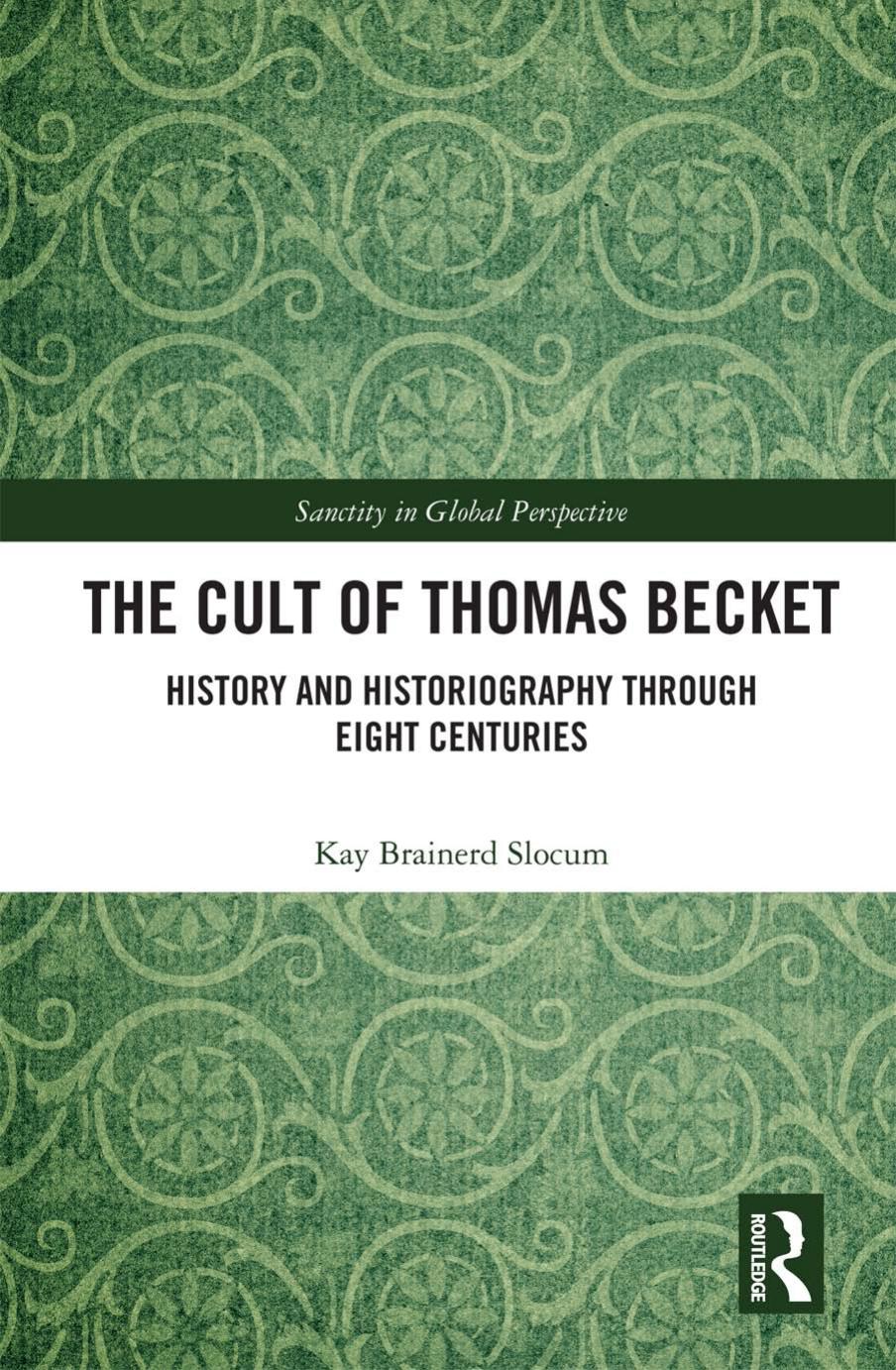The Cult of Thomas Becket by Slocum Kay Brainerd;

Author:Slocum, Kay Brainerd;
Language: eng
Format: epub, pdf
Publisher: Taylor & Francis (CAM)
Published: 2018-11-12T00:00:00+00:00
7âBecket as a symbol for the Catholic opposition
Although it the rising tide of religious enthusiasm known as the Catholic Counter Reformation can be traced to ideas of reform preceding the Protestant Reformation, it was primarily formulated in the 1530s and 1540s by idealistic young clerics in Rome. These men had won control of the administrative apparatus of the Roman Catholic Church during the pontificate of Pope Paul III, and they espoused a program of belief and action for the entire Roman Catholic Church. Most of their ideas were enacted during the long and arduous sessions of the ecumenical Council of Trent, which concluded 18 years of periodic deliberations in 1563.1 During this time, new orders of dedicated and determined religious men were created, the most famous of which was the Society of Jesus. The militant new reform movement spread throughout Europe during the 1560s and 1570s, penetrating even Protestant England, which proved to be a fertile ground for reformist ideals.
The hostility between Protestants and Catholics that followed Henry VIIIâs break with Rome, the more radical Protestant reign of Edward VI, and the accession of Queen Elizabeth I, had been intensified by the Papal Bull of 1570 which excommunicated the queen. Further antagonism developed when the English government promulgated drastic legislation against Catholic practice and recusancy in the 1571 Parliament, requiring the conservative clergy remaining in the Church to subscribe to the Churchâs Protestant Thirty-Nine Articles.2 Intense sectarian conflict continued during the following century as England forged a Protestant identity, while a Catholic subculture survived in the religiously divided country and in the communities of exiled Catholics on the continent. Scholars generally agree that, after 1559, there emerged in England a âseparated, sacramental âCatholic community,ââ supported largely by members of the gentry and reliant on the services of household and traveling priests;3 their work was enhanced by priests who returned to their native country after training in Italy and other European countries.
For Victor Houliston, âSt Thomasâs special significance for the Counter-Reformation in England derived from his âdecanonizationâ by Henry VIII in 1538 and the subsequent spoliation of the shrine at Canterbury.â4Moreover, although Henry VIII had discredited Becket by calling him the popeâs champion, by the 1580s this was the martyrâs chief significance for the Catholics; whereas in his own day Becket was involved in the political struggle between the papacy and the empire, now he emerged as a symbol of papal supremacy in a much wider context.5
In various areas of England, devotion to St Thomas continued surreptitiously, despite the coercive measures of the monarchy. For example, the name of Becket was scored through only lightly in the service books, or hidden by placing lightly glued strips of paper over the entries,6 and some images of the Canterbury martyr were altered to represent acceptable saints, rather than being destroyed completely. These infringements on the injunctions of the government offer evidence that the official assault on the cult had difficulty in overcoming the authority of ecclesiastical tradition. As Friar Arthur of Canterbury had
Download
The Cult of Thomas Becket by Slocum Kay Brainerd;.pdf
This site does not store any files on its server. We only index and link to content provided by other sites. Please contact the content providers to delete copyright contents if any and email us, we'll remove relevant links or contents immediately.
The World Almanac and Book of Facts 2021 by Sarah Janssen(797)
The emperor wears no clothes by Jack Herer(334)
The Crises of Civilization by Dipesh Chakrabarty(292)
History of India: A History In 50 Events by Hourly History(252)
The Way Home by Unknown(239)
Prehistoric Europe by Champion Timothy. Whittle Alasdair. Shennan Stephen. Gamble Clive(220)
Hidden Links by Zac Sangeeth & Sangeeth Varghese(218)
A Military History of the Cold War, 1962â1991 by Jonathan M. House(216)
Flood Legends: Global Clues of a Common Event by Charles Martin(205)
The History of Human Marriage by Edward Westermarck(198)
Darius in the Shadow of Alexander by Pierre Briant(195)
History of the Jews: An Enthralling Guide from Ancient Times to the Present (Religion in Past Times) by Wellman Billy(192)
The Education of Historians for Twenty-First Century by Thomas Bender; Philip F. Katz; Colin A. Palmer(184)
Chinese History: 500 Interesting Facts About China (Curious Histories Collection) by Ahoy Publications(184)
Big Tent by Mallory Factor(170)
Other Pasts, Different Presents, Alternative Futures by Jeremy Black(165)
Ancient Roman Sports, A-Z : Athletes, Venues, Events and Terms by David Matz(161)
The Philosophy of Historiography by John Lange(160)
Mark Of The Scots - Cl by Duncan A. Bruce(154)
